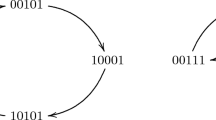Abstract
We propose a novel method to compute a cubic root of a cubic residue in Eisenstein ring. By applying our method, a new identity based signature scheme is proposed based on cubic residues. We formally prove that our scheme is secure against existential forgery on the adaptive chosen message and identity attacks assuming the hardness of factoring. Our scheme is the first identity based signature scheme based on cubic residues.
Similar content being viewed by others
References
Shamir A. Identity based cryptosystems and signature schemes. In: Advances in Cryptology-Crypto’84, Lecture Notes in Computer Science. Berlin: Springer-Verlag, 1984, 196: 47–53
Wang S B, Cao Z F, Cheng Z H, et al. Perfect forward secure identity-based authenticated key agreement protocol in the escrow mode. Sci China Ser F-Inf Sci, 2009, 52: 1358–1370
Chai Z C, Cao Z F, Dong X L. Identity-based signature scheme based on quadratic residues. Sci China Ser F-Inf Sci, 2007, 50: 373–380
Willliams H C. An M 3 public-key encryption scheme. In: Advances in Cryptology-Crypto’85, Lecture Notes in Computer Science. Berlin: Springer-Verlag, 1986, 218: 358–368
Rabin M O. Digitalized signatures and public key functions as intractable as factorization. Technical report: TR212, Massachusetts Institute of Technology, Cambridge, MA, 1979
Cao Z F. A class of public key cryptography schemes in Eisenstein ring ℤ[ω] (in Chinese). In: Proceedings of Third National Cryptography Conference. Xi’an: Chinese institute of Electronics, 1988. 178–186
Cao Z F. Public Key Cryptography (in Chinese). Harbin: Heilongjiang Education Press, 1993
Goldwasser S, Micali S. Probabilistic encryption and how to play mental poker keeping secret all partial information. In: Proc. 14th ACM Symp. on Theory of Computing, San Francisco, California, 1982. 365–377
Damgård I B, Frandsen G S. Efficient algorithms for gcd and cubic residuosity in the ring of Eisenstein integers. J Symbolic Comput, 2005, 39: 643–652
Pointcheval D, Stern J. Security proofs for signature schemes. In: Proc. of Eurocrypt’96, Lecture Notes in Computer Science. Berlin: Springer-Verlag, 1996, 1070: 387–398
Pointcheval D, Stern J. Security arguments for digital signatures and blind signatures. J Crypt, 2000, 13: 361–396
Abdalla M, Reyzin L. A new forward-secure digital signature scheme. In: Asiacrypt 2000, Lecture Notes in Computer Science. Berlin: Springer-Verlag, 2000, 1976. 116–129
Author information
Authors and Affiliations
Corresponding author
Rights and permissions
About this article
Cite this article
Xing, D., Cao, Z. & Dong, X. Identity based signature scheme based on cubic residues. Sci. China Inf. Sci. 54, 2001–2012 (2011). https://doi.org/10.1007/s11432-011-4413-6
Received:
Accepted:
Published:
Issue Date:
DOI: https://doi.org/10.1007/s11432-011-4413-6




